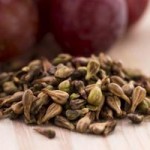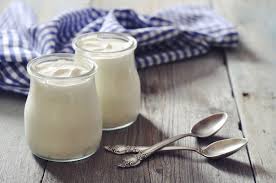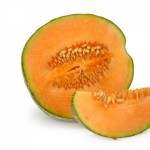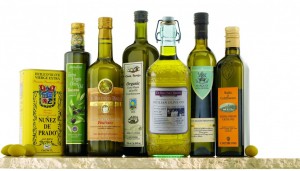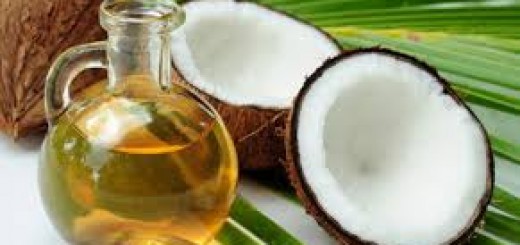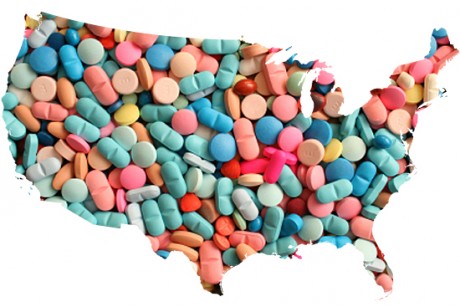Bottled Water: How Good Is It, Really?
3 John 1:2
Beloved, I wish above all things that thou mayest prosper and be in health, even as thy soul prospereth.
For anyone first reading the Health and Nutrition Update, please read this first: Your Health.
Also, please go to God’s Health System and subscribe to receive the updates.
Always remember that you are in charge of your health and not the doctors. Do not put your life in their hands without first seeking God and His health system.
Commentary
 In virtually every grocery and discount store you’ll find rows of bottled water. Numerous brands, including store brands, fill shelves and coolers. Water has become big business. Most of us are aware of the dangers of tap water, especially from fluoride, chlorine and other chemicals. Well water can be contaminated with bacteria and other organisms. So we buy bottled water, believing it is healthier for us than the water coming from our tap, whatever its source. And it usually tastes better too.
In virtually every grocery and discount store you’ll find rows of bottled water. Numerous brands, including store brands, fill shelves and coolers. Water has become big business. Most of us are aware of the dangers of tap water, especially from fluoride, chlorine and other chemicals. Well water can be contaminated with bacteria and other organisms. So we buy bottled water, believing it is healthier for us than the water coming from our tap, whatever its source. And it usually tastes better too.
But is it really healthier? We see commercials of mountain streams and springs gushing from a wooded hillside and the images stay with us to such an extent that most of us probably have similar visions in our minds when we’re buying drinking water. But much of the water that’s sold as bottled is produced by the same major food companies responsible for the chemical-laden, processed food that fills the stores. And most of that water actually comes from municipal sources. In other words, it’s basically tap water, sometimes distilled or treated by reverse osmosis, but mostly just filtered. So unless you’re purchasing water for better taste or for convenience, you’re wasting your money.
And the plastic containers they come in have issues of their own with pcbs and off-gassing. Below is a chart of the major brands that lists their sources and what type of treatment each brand receives to ‘purify’ it, along with an approximate cost. The full article discusses the plastic containers that hold the water and other often-used containers like sports bottles. It’s not just food you have to worry about or that can adversely affect your health.
Drinking Water
 Bottled Water Myths: Separating Fact from Fiction This is a very thorough report on bottled water from “Practical Gastroenterology” a medical journal.
Bottled Water Myths: Separating Fact from Fiction This is a very thorough report on bottled water from “Practical Gastroenterology” a medical journal.
“Bottled water consumption in the United States is continuing to grow annually, and it is now the second most popular commercial beverage choice of consumers according to the Beverage Marketing Corporation. And no wonder—it is conveniently packaged, portable, refreshing, and perceived by many consumers to be safer than tap water.
Some choose bottled water simply because they feel its taste profile is superior to that of municipally treated tap water, others because of concerns regarding potability. This article examines the basic differences between tap water and bottled water, the safety of reusing plastic water bottles, and the safety of popular refillable sports bottles.”
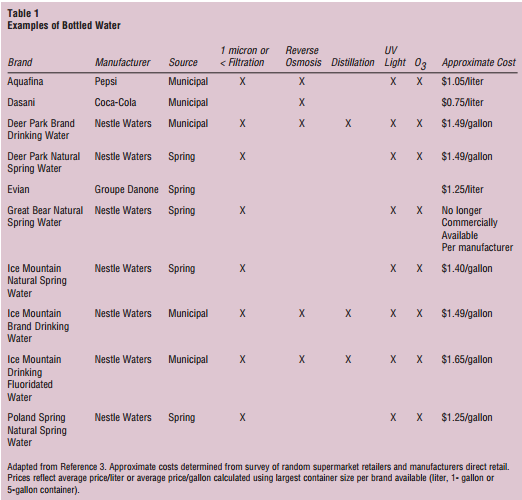 Health and Nutrition
Health and Nutrition
Grape Seed Extract Fights Cancer: Researchers
“[A] new study…demonstrates for the first time that grape seed extract is a wonder supplement in the fight against cancer, aiding chemotherapy’s effectiveness in killing colorectal cancer cells. What’s more, it also reduces chemotherapy’s painful side effects.
Capsules rather than powder are “the preferred way to take grape seed extract because (they are) more tolerable due to (powder’s) astringent taste and unappealing brownish red color….”
“Grape seed extract is showing great potential as an anti-inflammatory treatment for a range of bowel diseases and now as a possible anti-cancer treatment.” Additionally, the researchers found no side effects on healthy intestinal tissue from the use of grape seed extract in high concentrations.
It is impossible to get the levels of beneficial flavonoids and linoleic acid in grape seed extract from drinking wine. (So don’t try!) Also, grape seed extract may interact with some blood thinners and NSAID painkillers such as aspirin, Advil, and Aleve – so check with your doctor if you take any of these medications and want to take grape seed extract.”
Yogurt a Day Keeps Diabetes Away New research indicates that one serving of yogurt each day may lower the risk of developing type 2 diabetes.
“The data we have gathered show that yogurt consumption can have significant benefit in reducing the risk of diabetes…It’s not a huge effect, about an 18 percent reduction [in risk].”
“Yogurt is not magic for curing or preventing diabetes…There is no replacement for an overall healthy diet and maintaining [a healthy] body weight.”When they looked at total dairy intake, they saw no effect on the risk of diabetes. However, when they zeroed in on yogurt, they found one serving a day was linked with about a 17 percent reduced risk. Hu said they did not differentiate between types of yogurt, whether it was Greek-style yogurt or not, and the fat content.
Exactly how the yogurt may help is not certain. The thinking by many experts is that the probiotics in yogurt (“good” bacteria) alter the intestinal environment in a beneficial way, helping to reduce inflammation and improve the production of hormones important for appetite control, he said.”
UCSF Study Links Soda To Premature Aging, Disease, Early Death
“A new study looked at whether America’s thirst for soda speeds up how the body’s cells age.
“We think we can get away with drinking lots of soda as long as we are not gaining weight, but this suggests that there is an invisible pathway that leads to accelerated aging, regardless of weight,” said Dr. Epel.
Epel’s team discovered that in people who drank more sugar-sweetened beverages, the ends of their chromosomes, known as telomeres, were shorter.
The shorter the telomere, the less a cell can regenerate thus aging the body, and raising the risk of disease and early death. “This finding is alarming because it suggest that soda may be aging us, in ways we are not even aware of,” said Dr. Epel.”
Hand Air Dryers Spread Germs: Study
“For years, many experts thought that using hand air dryers found in public toilets was more sanitary than using paper towels. But they actually spread germs, according to new research….
The researchers found that germ counts around high-powered “jet-air” and ordinary warm-air hand dryers were 27 times higher in comparison with the air around paper towel dispensers.
Air hand dryers scatter germs much like an aerosol can disperses its contents when sprayed, and the study found that both jet and warm air hand dryers spread bacteria into the air and onto users and those nearby. The experts collected air samples around the hand dryers and also at distances of one and two meters away.
Bacteria persisted in the air next to the dryers well beyond the 15 second hand-drying time, with approximately half (48 percent) of the Lactobacilli collected more than five minutes after drying ended. Lactobacilli were still detected in the air 15 minutes after hand drying.”
Vitamin D
In young children, vitamin D deficiency may relate to specific food allergies
“Food allergy is characterized by hives, airway swelling, or difficulty breathing that is caused by eating particular foods. The most common food allergies are milk, eggs, peanuts or tree nuts.
Researchers from Taiwan recently conducted a study to look at the role that vitamin D might play in the risk of developing food allergies during the first 4 years of life.
Vitamin D levels were inversely associated with milk sensitization at age 2, meaning that lower levels were related to a higher risk of milk sensitization.
Higher prevalence of milk sensitization at age 2 was significantly related to risk of developing allergic rhinitis and asthma at age 4.”
 New study suggests independent link between smoking and vitamin D status In a recent study, “smokers had lower serum vitamin D concentrations than non-smokers,” results indicated. That suggests that smokers should take a greater amount of supplemental D.
New study suggests independent link between smoking and vitamin D status In a recent study, “smokers had lower serum vitamin D concentrations than non-smokers,” results indicated. That suggests that smokers should take a greater amount of supplemental D.
“New research published in the journal Hormones found a significant relationship between vitamin D status and smoking habits.
The researchers found that 50.3% of the participants were vitamin D deficient with vitamin D levels below 20 ng/ml. Only 8.8% of the participants were considered to be vitamin D sufficient with levels above 30 ng/ml.
Among all risk factors observed, including BMI, age, and alcohol consumption, a significant association was found only between vitamin D status and smoking. Smokers were 60% more likely to be vitamin D deficient than non-smokers.”
Antioxidants
Food That Will Heal Your Lungs From Smoke Damage
“According to SixWise.com, foods containing the flavonoids catechin, epicatechin, quercetin and kaempferol have antioxidant and anti-inflammatory features that may be helpful to lung protection in smokers and ex-smokers. Flavonoids are plant pigments that may protect against lung cancer by arresting the growth of cancer cells and combating the DNA damage done by smoking. Foods containing catechins include strawberries, green tea and black tea, and foods containing kaempferols include brussels sprouts and apples. Quercetin can be found in beans, onions and apples.”
5 must have antifungal herbs for every pantry This helpful article lists the top 5 antifungal herbs and gives information on each of them.
Fungal infections are one of the most common diseases known to humanity. Since the prehistoric times, humans have struggled with fungal infections and have relied on herbs for their treatment and prevention.
In spite of its being considered somewhat dated, herbs still continue to be used as “alternative” remedies for fungal infections of all sorts, and, unlike synthetic drugs which often cause allergic reactions or other unwanted side effects, herbs provide a safe, readily accessible, affordable and reliable way to treat fungal diseases.
Here are the top five antifungal herbs that you should always have in your pantry or kitchen cupboard.
1. Garlic
2. Cloves
3. Oregano
4. Calendula – better known as a Spanish or pot marigold
5. Tea tree oil
Olive Oils
Olive Oil, Extra Virgin, or Cold-Pressed…What’s the Difference?
“Have you ever looked closely at the label of an olive oil bottle? Strewn across the grocery store aisles, you’ll find bottles labeled with “first cold-pressed,” “extra-virgin,” or “product of Italy.” With so many labels, distinguishing the difference between these terms can be confusing. If you’ve ever wondered what these terms mean or how to choose a high quality olive oil, we’re here to clarify the confusion.
Extra virgin olive oil is made using a process called “first cold-pressed.” In simpler terms, the word “first” refers to the olives being pressed on the first round of extraction. “Cold” refers to the olives being kept no higher than 81.9 °F, and “pressed” refers to the method of extraction. This method indicates that no heat or chemical additives were used to extract the oil from the olives, which can alter and destroy the flavors and aromas of the olive oil. Without adding heat to the processing, the olive oil also retains its full nutritional value. Virgin olive oil has a slightly more acidic level and does not meet the same requirements . Regular olive oil is a blend of slightly defective or low quality olives. For consumption, these olives are refined and tend to have a colorless and flavorless profile. Light olive oil has undergone a similar process but is lighter in color and flavor, not calories!
Type of Container – Try to look for an olive oil in a dark or tinted glass bottle, rather than a plastic or clear glass. Any light that enters the bottle can cause the oil to photo-oxidize and taste rancid or bitter. In general, heat, air and light are the enemies of oil. To prevent olive oil from going rancid, store it in a cool, dry area, away from the stove or other hot appliances.”
Pet Health
NATURAL REMEDIES FOR DOGS, CATS WITH SORE, IRRITATED PAWS, SKIN This article discusses paw treatments for both dogs and cats. With winter coming on and salt used so frequently to melt ice, it’s important to make sure their paws aren’t affected. And yeast can be a problem at any time, as it often results from excessive moisture. Below are 3 foot soaks that will help your pet have healthy paws all year long.
“If your dog’s or cat’s paws have come into contact with road salt, herbicides, fertilizers or pesticides it is very important to ensure that you remove the particulate and/or residue from these substances right away. Even if you cannot see anything on your dog’s paws – if he/she [h]as walked on or brushed against surfaces or plants that are treated with these substances, a residue will be present… The toxic chemicals found in these substances can make their way into your dog’s and cat’s blood stream by passing through your dog’s or cat’s skin or when he/she licks his/her paws, fur or skin.
The most affective [sp] way to remove toxins (road salt, herbicides, fertilizers or pesticides) from your dog’s and cat’s paws is to provide your dog or cat with a 30 second foot soak. Depending on the size of your dog, you can do a foot soak in the bowl or basin, sink, bathtub, shower or in a small children’s pool.
Foot Soak Recipe #1 – Warm Water and Iodine
Remove Toxins, Disinfect Paw Wounds, Treat Yeast InfectionFoot Soak Recipe #2 – Warm Water, Apple Cider Vinegar and Hydrogen Peroxide
Treat Yeast Infections or Irritated PawFoot Soak Recipe #3 – Warm Water, Apple Cider Vinegar, fresh squeezed Lemon Juice, Peppermint Essential Oil
Treat Yeast Infections or Irritated Paws”
Conclusion
Your physical health is very important, but of even greater importance is your spiritual health. Man suffers from a fatal spiritual disease called sin, which always leads to death.
Romans 6:23 For the wages of sin is death; but the gift of God is eternal life through Jesus Christ our Lord.

